Making cannabis clones for yourself is easy, cost effective and fun. Here’s our guide on how to clone cannabis. By the end of it, and with a bit of practice, you’l be teaching your mates how to clone cannabis.
What Is Cloning?
Cloning is the process of propagating, or making new plants through cuttings. To encourage new roots to grow, cuttings are dipped in a hormone gel or powder. The result is an exact replica of the mother plant.
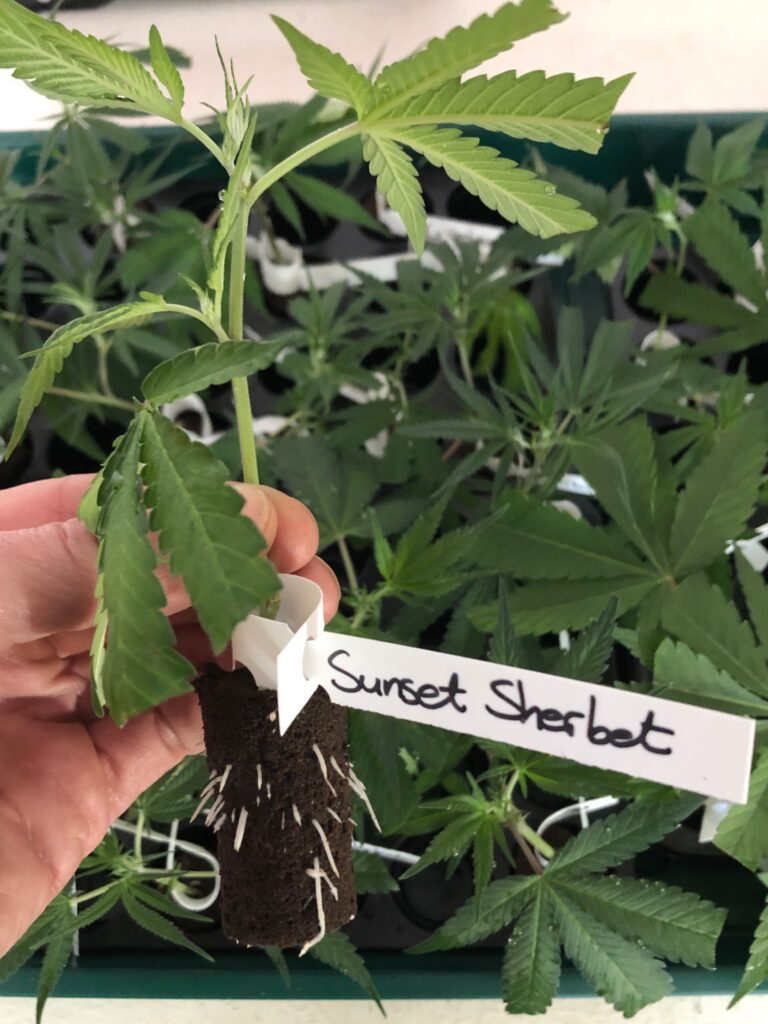
Why Clones Over Seeds?
When grown from seed, although all the same strain, plants can have slight differences. These differences can include height, flower structure, yield, trichome production, potency and much more. Phenotype describes different types of plants within the same strain. Take identical twins, they look the same at first, but when looked at closer, there are notable differences.

Cloning eliminates these differences. Each plant is an exact genetic copy of the donor mother, and also the same age. Clones ensure a more consistent crop and eliminates any surprises.
Good Mothers Make Good Clones!
Once a pheno has been selected as a keeper, it can be kept as a mother under 18 hours of light per day. Healthy moms can provide a constant supply of clones during their lifetime. The number of clones depends on the size of the mother plant. Allow moms to recover for 7-14 days before taking more cuts.
To ensure good quality clones, perform maintenance or replace mother plants regularly. This ensures they don’t become ‘tired’ and easy targets for pests and diseases. This should be every 6 months. Trim root balls and repot mothers to keep them healthy if not replacing them.
To replace a mother plant, take a batch of clones from it. Watch them all closely noting which cut roots quickest, which looks the hardiest, which starts pushing new growth first. After the rooting process, discard the weaker clones or send them to flower. Grow the stronger cuts out a bit and see which of them is the healthiest, strongest of the lot. The hardiest, most vigorous growing plant is your new mother.
By flowering the strongest clones and using inferior ones to replace mothers, you’ll be weakening your strain over time. This is called genetic drift. It can easily be avoided by maintaining healthy mother plants.
Mothers don’t need the same conditions flowering plants do. Our mothers are kept under 200-300 PPFD of 6400K, CFL lights. We feed a nutrient solution with an EC of no more than 1.2. Plants are flushed every so often with pH balanced water to avoid nutrient build ups.
Types Of Cloning Plugs
When learning how to clone cannabis, you should get to know some of the tools like starter plugs. They range from rock wool to peat pellets and natural sponges of different kinds. What’s important to note is not to mix your mediums. For example, don’t clone in rock wool when planning a coco peat finish. Clone in rock wool to grow and flower in rock wool.
Preforma’s
Made from natural materials only, they always retain an air content of 30% or more. This means no compaction, even under heavy misting conditions. Preforma’s are an ideal propagation medium, providing the perfect environment for even and fast rooting. The plug binder’s structure ensures no transplant shock. This means you can ship or transplant the plugs earlier, freeing up valuable bench space. This allows for the faster rotation of crops.
Peat Pellets
Popular in recent years the coco peat pellet is expanded with water and surrounded by a soft material with an opening at the top. Its pH is naturally around 5.5-6.5 but any water or solution used to expand the pellet should also be 5.5-6.5. Make sure the pellet stays moist but not soaked, allowing for water to drain off.
Rock Wool
An old favourite able to hold both air and water well. Produced by the heating of basalt rock and calcium and spun into strands and then sheets. With a naturally high pH of 8, rock wool must be soaked in water with a pH of 5.5–6 for 30 minutes. Shake excess water off before placing the cutting inside.
Gels Or Powders?
It hasn’t really been a big debate anywhere but it’s worth mentioning one or two things about each. From our research we’ve heard that powders can ‘cake’ on stems inhibiting root growth. We’ve also heard about gels not stored correctly and clones dying. Powders are made up of only 2-3 ingredients whereas gels could have many.
We asked some experts what they use, gels or powders?
Canna Clone Director Jason says “we prefer powders in very small amounts. We lightly dip clones in a soft wood rooting powder. We’ve seen more consistent results with powders over gels.”
Head Cultivator for a licensed Pharma facility; who preferred not to be named; has gone as far as to research strains and their preferences, basically letting the plants decide.
“We don’t have a preference, it’s all about production and deadlines. We’ve seen that specific cultivars root quicker with gels and others with powders. We like to keep both on hand and make it strain specific.”
How Tow Clone Cannabis
A good cutting is between 7-15cm long. A thicker, green, flexible stem will give you the best chance of successfully cloning your plants. With a clean (preferably sterile), sharp blade, like a scalpel or pruner, cut at a 45° angle. Place cuttings immediately in water submerging the cut.
Should you not place the freshly cut stem in water, an air bubble can occur inside the stem and stop any movement of nutrients up and down it’s length. Should the cutting survive and be grown out it could be stunted.
Dip each cutting into the rooting gel or powder covering the bottom 1 cm of the stem. Shake off any excess rooting agent. Place the fresh cutting into a starter plug of your choice.
Some cultivators prefer to cut just below a node, submerging that node in the plug to aid with rooting. They also like to trim big fan leaves for reasons that include saving space and limiting plant transpiration.
Canna Clone don’t cut below the node explaining; “it doesn’t matter, we take cuts anywhere on the stem and get the same results. Roots in 7-9 days.”
How To Maintain Cannabis Clones
Humid, temperate environments are best for new cuttings for the next 7-14 days while they strike roots. Propagation domes are good in keeping humidity levels high. Spray the inside of the dome with water if humidity is too low. Raise temps with a heat mat and thermostat to promote quick rooting especially in the cooler winter months. Exchange stale air with fresh air 2-3 times a day by lifting the dome for a minute or two.
Open one vent or lift the dome’s lid slightly from around day 5. If you see leaves wilting and curling, close the vents/dome again and repeat the next day. You should be exposing your clones to a slightly harsher environment over time. Called hardening off, this gives clones the best chance of survival. Vent the dome well when many roots are visible on your clones. Water the plugs with small amounts of plain pH corrected water when dry.
Possible Cloning Problems
Cloning cannabis is pretty straight forward but it can be easy to mess up. It’s usually small mistakes that lead to clones not making it. Contaminated plugs, gels and cutting utensils are the cause of most problems, or the lack of fresh air. Too much moisture inside the dome will also add to issues.
Here’s a few possible reason’s your clones didn’t make it:
Damping Off – This is when the submerged stem, or the part just above it, starts to wilt and rot. Pythium (root rot) or fusarium fungi’s are usually the culprits. These fungis do well in environments with low oxygen levels so keep air inside the dome fresh.
Fusarium – This is a fungus that can attack both the submerged cut as well as the growing point. Damage above the ground includes yellowing of the growing tip, eventually forming black spots causing leaves and clones to die.
Powdery Mildew & Grey Mould – These are fungi’s that usually attack above the ground. Found on leaves or stems, white or grey patches of ‘hairy strands’ or ‘white powders’ form. They sap plants of energy eventually killing them. Both of these grow well in humid, stale conditions.
Temperature – Roots grow much slower in colder conditions. By keeping temps above 20° C you improve chances of success. Lower temps means your clones will be in a damp cold dome for a long period of time as the rooting process slows down. The longer clones are under damp cold conditions, the better your chances of problems.
How To Clone Cannabis Recap:
- Clones should be 7-15cm long
- Green, flexible stems are best
- Cut at a 45° angle
- Place cutting immediately in water
- Lightly dip in powder or gel shaking off any excess
- Place in rooting plug, and dome keeping humidity levels high
- Replace the air inside the dome 2-3 times per day
How To Clone Cannabis – Pro Tips
There are a few notable methods on how to clone cannabis that we’ve come across. By sharing we can hopefully help you. All come from clients or friends in the industry; these are methods that work for them.
According to Canna Clone’s Jason, “we keep our clones at a constant 24° temp, under 24 hours of light with a bit of Mozart played in the background.”
Dale, Head Cultivator at Unicorn Farms, likes to make a weak nutrient solution to soak plugs in. “We then dip the cuttings in a softwood rooting powder and into the pre-soaked plugs and propagators they go. We add a dash of love and a sprinkle of unicorn happiness too.”
‘Jay,’ a dispensary owner in Gauteng, prefers aeroponic cloners. Made up of a closed container with a misting device or sprinkler inside. “We don’t use any plugs. We lightly dip cuts in a gel, sometimes it’s not even necessary for some strains. Then we place them in the cloner and forget about them for 7-10 days.”
As for us, we apply a solution of Fulvic Acids and Kelp Extracts to our mothers every 2 weeks in a 5ml:2ml ratio per liter of water. The auxins in the kelp aid in the rooting process.
A method for hard to root plants that we’ve found to be very effective, uses both a gel and a powder. The clone gets a light dip in rooting powder to seal the cut. Then the hole of the Preform plug is filled with rooting gel and the cut placed inside.
To ensure a long shelf life, store rooting gel in the fridge. To avoid contamination, do not dip cuttings into the jar. Take a small amount of rooting gel/powder from the jar or bottle to use for cuttings and discard afterward.
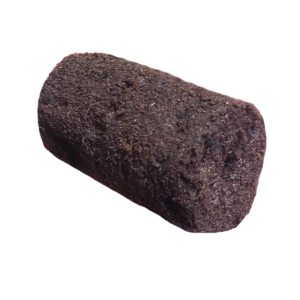
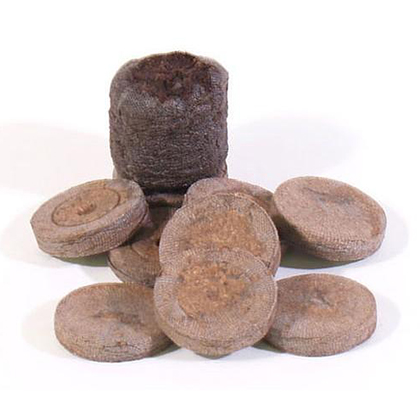
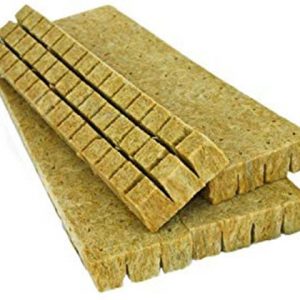
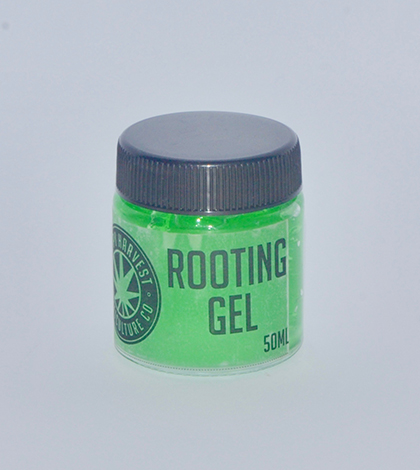



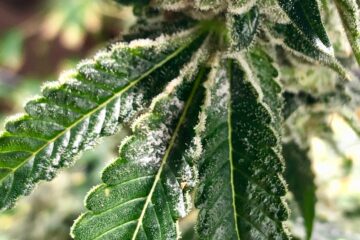
0 Comments